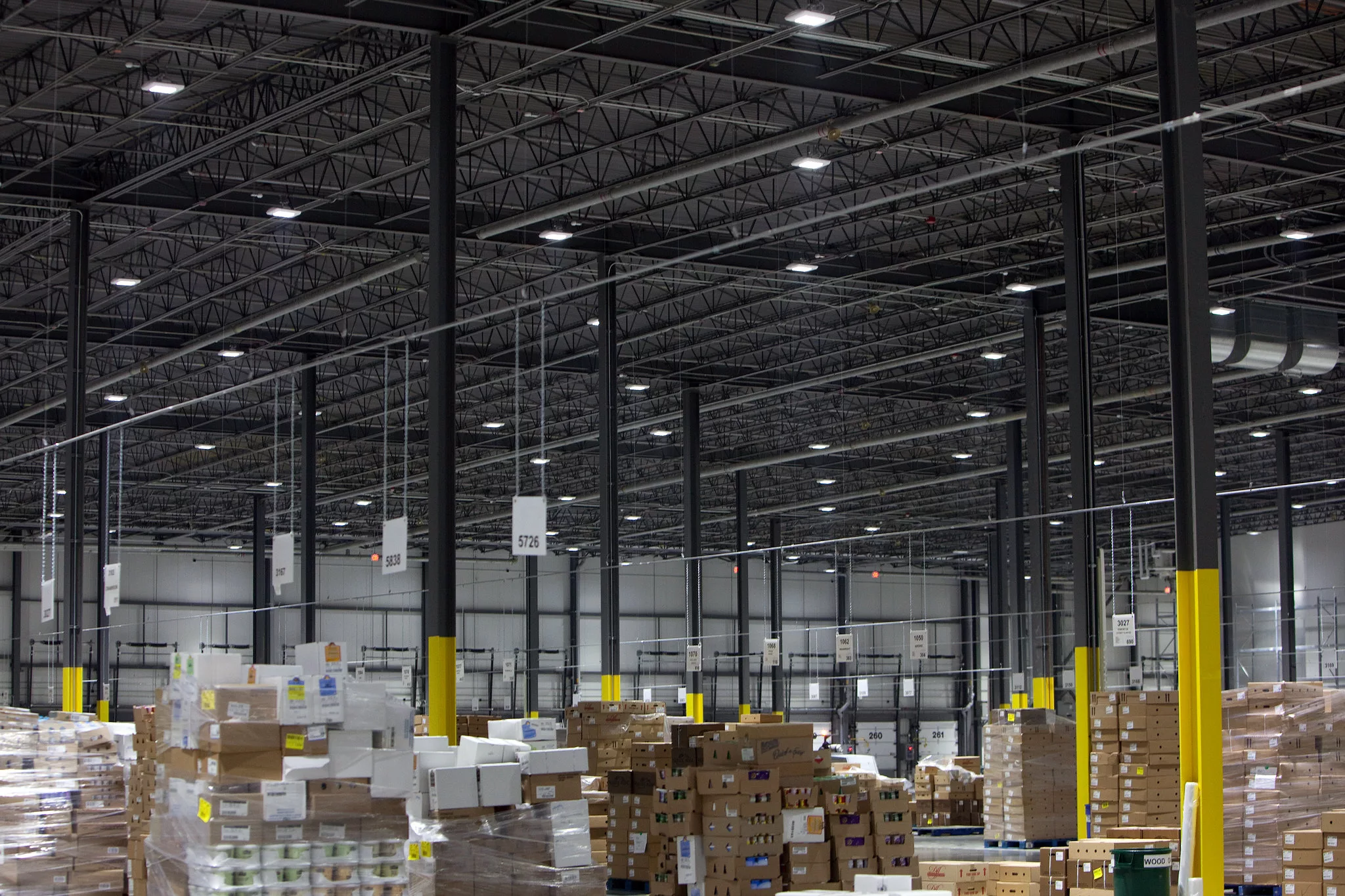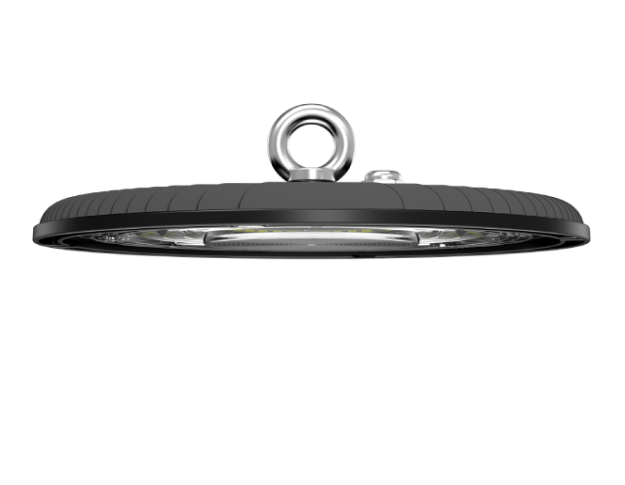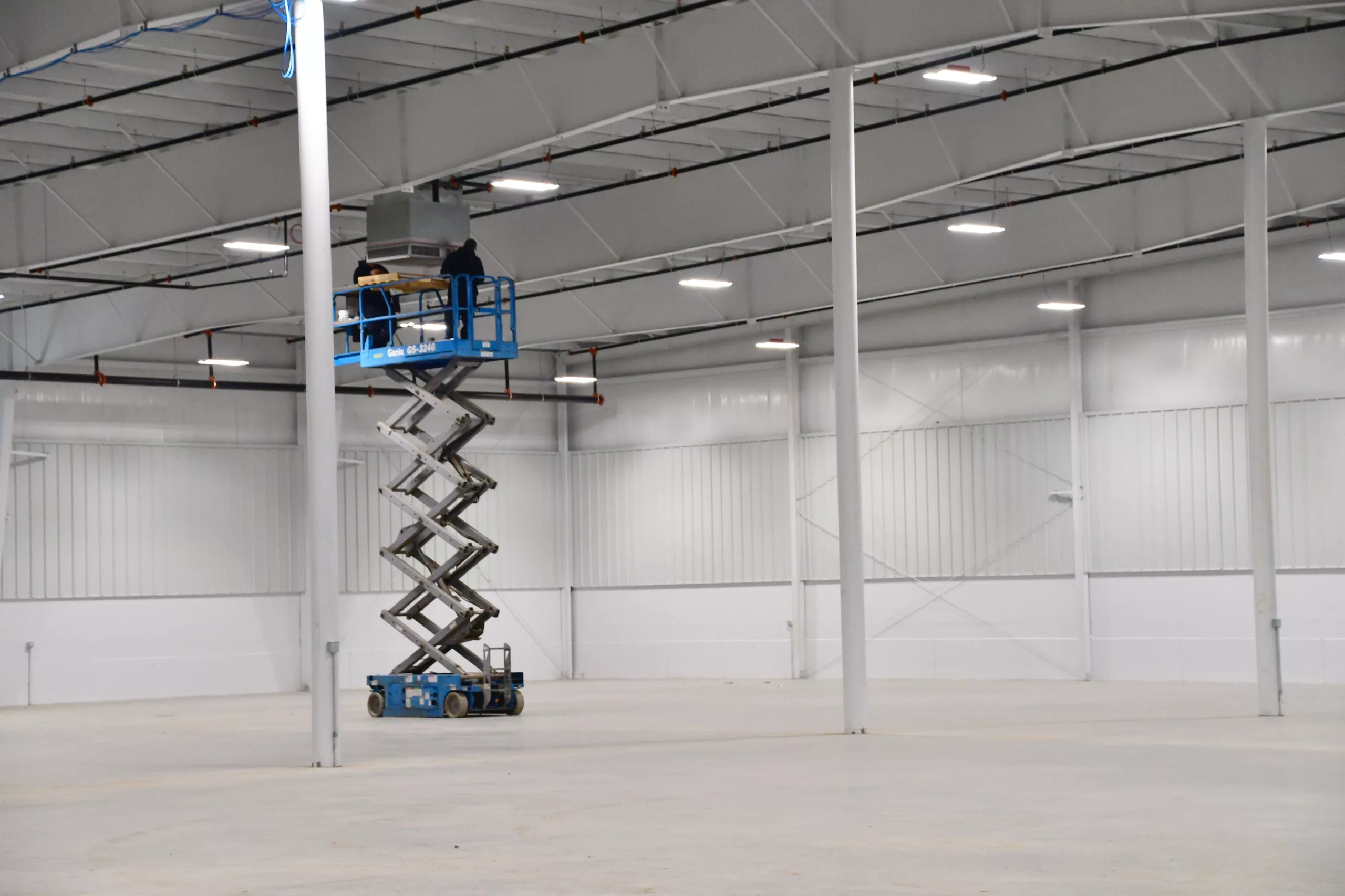Looking to enhance your industrial lighting solutions? Our comprehensive guide to high bay light fixtures provides you with essential knowledge to brighten your space efficiently. We ensure you find the perfect lighting solution to meet your needs.
High bay light fixtures are designed for high-ceiling environments over 20 feet, such as warehouses and gymnasiums, and are crucial for reducing energy costs while improving lighting quality. LED high bays, known for their energy efficiency, can significantly decrease energy bills and enhance lighting performance.
Discover how to select, install, and maintain high bay light fixtures to optimize your industrial lighting. Dive deeper into the types and benefits of high bay lights and how they can transform your business’s productivity and safety.
What Are High Bay Light Fixtures?

Think Times Square in New York City, ablaze with vibrant neon signs and towering digital displays. These iconic landmarks rely on specialized lighting designed for high ceilings – high bay light fixtures. These aren’t your average table lamps or pendants; they’re engineered to illuminate vast spaces like warehouses, factories, gymnasiums, and even sprawling shopping malls.
High bays differ from low bays in several key ways:
- Installation Height: High bays are typically installed 20 feet or higher, while low bays are used for ceilings under 20 feet.
- Lumen Output: High bays pack a powerful punch, delivering a much higher lumen output (brightness) to reach those lofty heights.
- Beam Angle: High bays often have narrower beam angles to focus light downward, while low bays may have wider angles for more diffused light.
It’s also important to distinguish high bays from floodlights. While both are powerful, floodlights are typically used for outdoor applications and have a much wider beam spread.
The Benefits of High Bay Lighting
High bay lighting offers a multitude of advantages that make it a smart investment for businesses:
- Energy Efficiency and Cost Savings: LED high bays, in particular, are incredibly energy-efficient. They consume up to 75% less energy than traditional HID fixtures, translating to significant cost savings over time. In fact, the U.S. LED lighting market is projected to grow at a CAGR of 3.72% from 2024 to 2030, reaching $11.06 billion by 2030.
- Improved Productivity and Safety: Well-lit workspaces are proven to boost productivity and reduce accidents. In a Texas manufacturing plant, switching to LED high bays resulted in a 15% increase in worker productivity.
- Enhanced Aesthetics and Branding: High-quality lighting can make a space look more inviting and professional, contributing to a positive brand image.
For more insights on optimizing such environments, explore our guide on the importance of lighting control modules to enhance smart lighting systems.
Let’s take a closer look at the different types of high bay light fixtures available.
Types of High Bay Light Fixtures

Comparative Overview of High Bay Light Fixture Types
| Type | Installation Height | Lumen Output | Energy Efficiency | Lifespan | Applications |
| LED High Bays | 20 feet and above | Very high | Up to 75% more efficient than HID | Up to 100,000 hours | Warehouses, Gymnasiums, Retail Stores, Airports |
| HID High Bays | 20 feet and above | Highest | Less efficient than LEDs | 10,000 – 25,000 hours | Large Industrial Spaces, Arenas |
| Fluorescent High Bays | 20 feet and above | High | Less efficient than LEDs | 20,000 – 30,000 hours | Warehouses, Factories, Budget-Conscious Settings |
Just like cars, high bay lights come in different models, each with its own strengths and weaknesses. Let’s explore the three main types:
LED High Bays: The Energy-Saving Superstars
LED high bays are the rock stars of the lighting world. They’re known for their exceptional energy efficiency, lasting up to 100,000 hours or more. That’s like having a light bulb that could burn for over a decade! They also turn on instantly, offer dimming capabilities, and come in various color temperatures to suit different environments.
A prime example of LED high bays in action is New York City’s JFK International Airport. In 2023, the airport underwent a massive lighting upgrade, replacing older fixtures with state-of-the-art LEDs. The result? Improved visibility for both aircraft and ground crews, along with a significant reduction in energy consumption.
HID High Bays: The Powerhouses
HID (High-Intensity Discharge) high bays are like the heavy-duty trucks of lighting. They’re incredibly powerful, blasting out a massive amount of light, making them ideal for very large spaces. However, they’re less energy-efficient than LEDs and contain mercury, which raises environmental concerns.
Fluorescent High Bays: The Budget-Friendly Option
Fluorescent high bays are the economical choice. They’re cheaper upfront, but their lifespan is shorter than LEDs, and they’re not as energy-efficient. Think of them as the reliable old car that gets the job done, but might need a bit more maintenance.
Applications of High Bay Lighting

High bay lights aren’t just for warehouses. They shine in a variety of settings:
- Industrial Lighting: Factories, warehouses, and distribution centers rely on high bays to keep operations running smoothly and safely. In fact, by 2025, LED installations in industrial settings are projected to grow by a whopping 83%.
- Commercial Lighting: Retail stores, supermarkets, and showrooms use high bays to create inviting atmospheres and showcase products in the best light.
- Other Applications: You’ll find high bays illuminating everything from gymnasiums and arenas to convention centers and airplane hangars.
Learn about the diverse types of street lights that complement high bay fixtures in various applications.
How to Choose the Right High Bay Light Fixtures
Choosing the right high bay light fixture is like finding the perfect pair of shoes – it needs to fit just right. Here’s what you need to consider to help your clients make the best choice:
Understanding Lighting Needs
- Footcandles: This measures the amount of light that falls on a surface. Different tasks require different levels of illumination. For example, a warehouse might need 10-20 footcandles, while a manufacturing facility might need 50 or more.
- Lumens: This measures the total amount of light emitted by a fixture. The higher the lumens, the brighter the light.
- Color Temperature: Measured in Kelvin (K), this determines the “warmth” or “coolness” of the light. Lower values (2700K-3000K) are warm and inviting, while higher values (5000K-6500K) are cool and energizing.
- Beam Angle: This determines how wide the light spreads. Narrower angles focus light on a specific area, while wider angles provide more general illumination.
Tutorial: How to Calculate Your Lighting Requirements
To get started, you’ll need to know the dimensions of the space and the desired footcandle level. You can use online calculators or consult with a lighting professional to determine the number and type of fixtures needed.
Considering Space Dimensions and Mounting Height
The size and layout of the space will dictate the number and placement of fixtures. Higher ceilings will require more powerful fixtures or a greater number of them to ensure adequate light reaches the floor.
Evaluating Energy Efficiency
Energy efficiency is a top priority for many businesses. Look for high bay fixtures that are DLC (DesignLights Consortium) listed and Energy Star certified. These certifications indicate that the fixture meets rigorous standards for energy performance.
Case Study: Midwest Distribution Center’s Cost-Effective Solution
The Midwest Distribution Center, a sprawling facility in Ohio, recently upgraded their lighting system with energy-efficient LED high bays. By partnering with a knowledgeable lighting consultant, they were able to select the right fixtures and layout for their specific needs. The result? A well-lit workspace that’s safer and more productive, along with a significant reduction in energy costs. They expect to recoup their investment within five years, thanks to the energy savings.
To further enhance these benefits, consider understanding the cost of street lighting as it provides additional insights into overall lighting expenses and savings.
Installation and Maintenance of High Bay Lights

Installing high bay lights isn’t a DIY project. Due to their height and electrical requirements, it’s crucial to hire a qualified electrician to ensure safety and proper functionality.
Safety Considerations
- Working at Heights: Installers must use appropriate safety equipment like harnesses and lifts.
- Electrical Connections: Incorrect wiring can lead to electrical shocks or fires.
- Fixture Weight: High bays can be heavy, so secure mounting is essential.
Maintenance Tips
While LED high bays are known for their longevity, regular maintenance is still important to maximize their lifespan and performance:
- Cleaning: Dust and debris can accumulate on fixtures, reducing light output. Regular cleaning with a soft cloth or duster is recommended.
- Bulb Replacement (if applicable): While LEDs rarely burn out, drivers (the electronic components that power the LEDs) can fail. If a fixture stops working, have an electrician check the driver.
- Fixture Inspection: Periodically inspect fixtures for any signs of damage or wear.
Case Study: Atlanta Mega Warehouse’s Safety Improvement
The Atlanta Mega Warehouse, a massive distribution center, prioritized safety when upgrading their lighting. They partnered with a reputable electrical contractor who ensured that all installations met safety codes and regulations. The result? A brighter, safer workplace with fewer accidents and improved employee morale.
Future Trends in High Bay Lighting
The future of high bay lighting is bright, with exciting advancements on the horizon:
Smart Lighting Controls
Imagine lights that automatically adjust their brightness based on occupancy or daylight levels. That’s the power of smart lighting controls. These systems can significantly reduce energy consumption and enhance the overall lighting experience.
- Dimming: Adjusting light levels to match the needs of the space.
- Occupancy Sensors: Turning lights on and off based on whether the space is occupied.
- Daylight Harvesting: Using natural light to supplement artificial lighting.
Case Study: FutureTech Innovations’ Pilot Project
FutureTech Innovations, a tech company in Washington state, is leading the way in smart lighting. They’re piloting a project using LED high bays equipped with sensors that monitor occupancy and ambient light levels. The system automatically adjusts the lighting to optimize energy use while maintaining a comfortable and productive environment.
IoT Integration
The Internet of Things (IoT) is transforming the way we interact with technology, and lighting is no exception. IoT-enabled high bays can be remotely monitored and controlled, allowing for predictive maintenance and real-time energy usage tracking.
High Bay Lighting for Your Business
As a wholesaler, you’re in a unique position to help businesses navigate the world of high bay lighting. Here’s how you can make a difference:
Partnering with a Reliable Supplier
Choosing the right supplier is crucial. Look for a company with a proven track record, a wide range of high-quality products, and excellent customer service. Don’t hesitate to ask for references and inquire about warranties and certifications.
Financing Options
For many businesses, the upfront cost of a lighting upgrade can be a barrier. Consider offering financing options, such as leasing or energy-saving programs, to make the transition more affordable for your customers.
Conclusion
High bay light fixtures are more than just a way to illuminate large spaces. They’re a powerful tool for improving productivity, safety, and energy efficiency. By understanding the different types of fixtures, their applications, and how to choose the right ones, you can empower your customers to make informed decisions that will benefit their businesses for years to come.
Ready to take the next step?
Explore our wide selection of high bay light fixtures or contact our lighting experts for a free consultation. We’re here to help you find the perfect lighting solution for your business.







